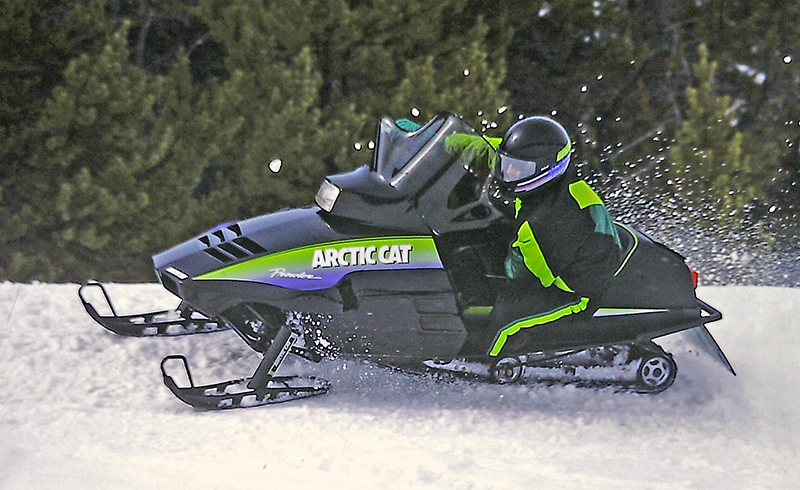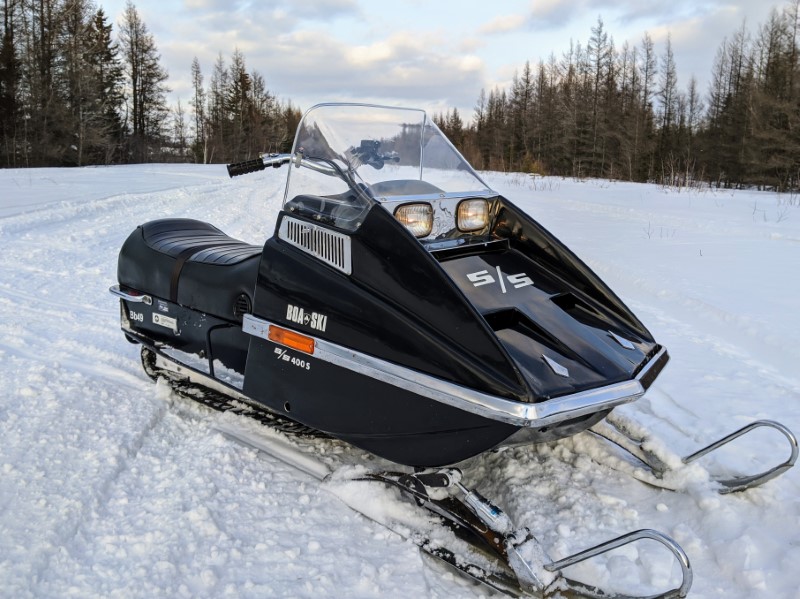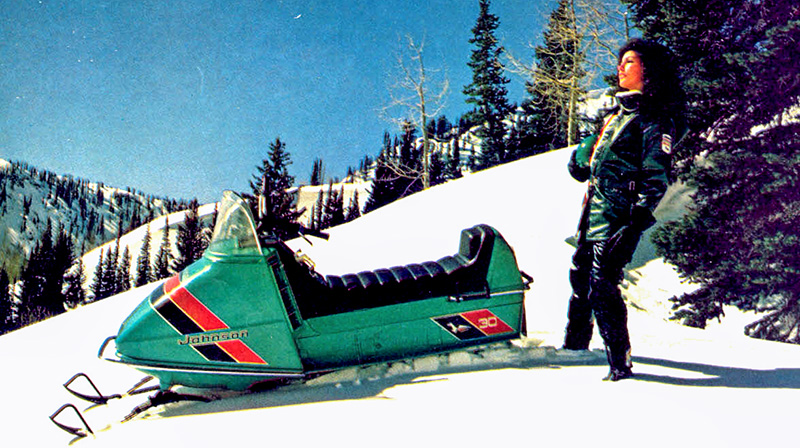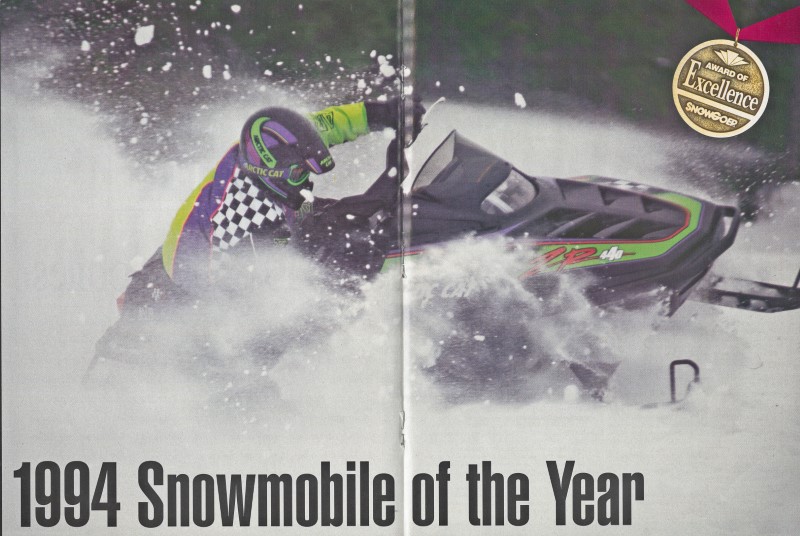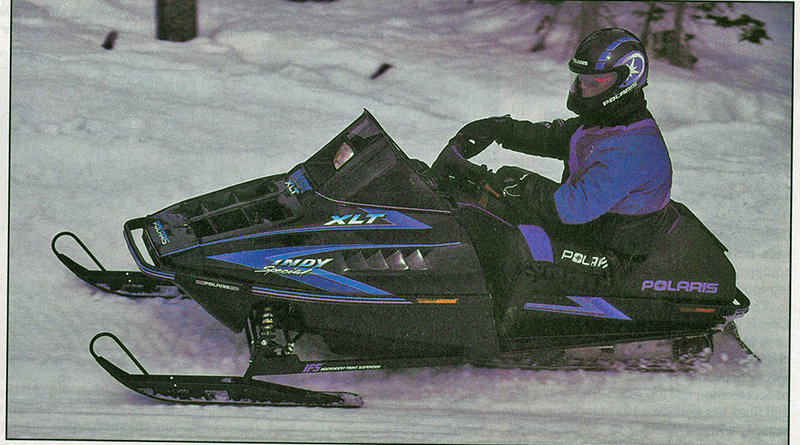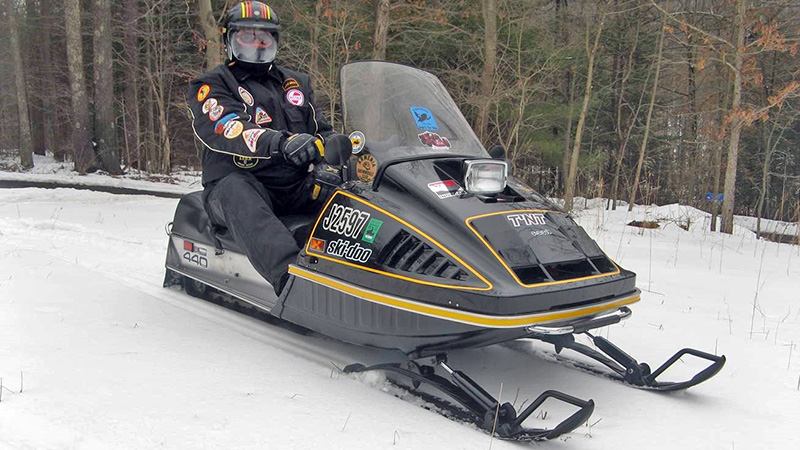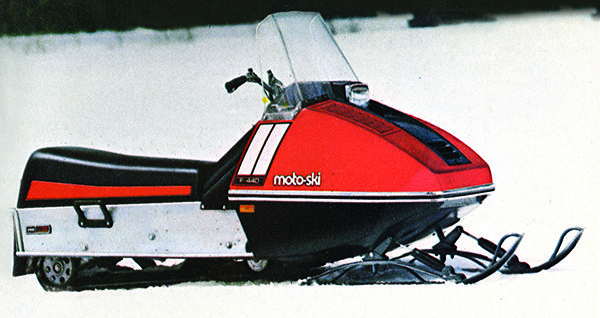 They grew up tough. Les Industries Bouchard began manufacturing Moto-Ski snowmobiles in 1962, and the orange machines from the south bank of the St. Lawrence River earned a reputation for durability.
They grew up tough. Les Industries Bouchard began manufacturing Moto-Ski snowmobiles in 1962, and the orange machines from the south bank of the St. Lawrence River earned a reputation for durability.
The famous “Tougher Seven Ways” ad campaign enhanced that reputation with commercials that featured a Moto-Ski on a roller coaster and another one bouncing along a bone-dry rocky creek bed. By the time the 1971 sales season was over, Moto-Ski was the second best-selling brand in Canada and third best in the world. But financial complications led to its acquisition by Bombardier early in calendar year 1971. However, big yellow decided to operate Moto-Ski as a separate division that would stand on its own in the increasingly turbulent snowmobile industry.
Enter the ‘F’
Snowmobilers were demanding machines that were not just faster and more reliable, but also ones that rode and handled better and went farther on a tank of gas. Plus, new industry-mandated noise and safety requirements meant that snowmobiles were changing in ways beyond performance parameters.
For 1973, Moto-Ski introduced its first models developed under Bombardier ownership. The all-new ‘F’ series was engineered for family snowmobiling with style and verve- sort of a “sport sedan” for the snow. The sales literature explained, “Just because you’ve got your girl along, you don’t have to ride an old ladies’ machine at an old ladies’ pace.”
Marketed alongside Moto-Ski’s traditional engine-on-top-of-a-steel tunnel Zephyr, Capri and Cadet lines, the F was a significant departure in almost every way.
Prior to its release to the public, the ‘F’ series Moto-Ski was tested by more than a thousand consumers. Along with its sibling, the ‘S’ series sled, Moto-Ski figured the two snowmobiles would account for one-third to one-half of the production for the 1973 model year, according to a report in the October 1972 issue of Snow Goer.
The ‘F’ series showed up on the last day (due to a memo mix up) of Snow Goer magazine’s annual test ride in Wyoming. In all, editors tested 26 different snowmobiles in the spring of 1972.
 Borrowing styling and engineering concepts from Moto-Ski’s pre-Bombardier Bullett oval racers, the F series was noticeably sleeker and wider, and had a lower center of gravity than the other Moto-Ski family sleds. Compared to the 1972 Zephyr 340 or 440 and the MS-18, the ‘F’ series was 7 inches shorter and the ski stance was 3 inches wider.
Borrowing styling and engineering concepts from Moto-Ski’s pre-Bombardier Bullett oval racers, the F series was noticeably sleeker and wider, and had a lower center of gravity than the other Moto-Ski family sleds. Compared to the 1972 Zephyr 340 or 440 and the MS-18, the ‘F’ series was 7 inches shorter and the ski stance was 3 inches wider.
“The machine’s overall stability matched other sleds well respected for good handling, something Moto-Ski’s consumer test program confirmed last spring,” Snow Goer editors wrote.
The low forward-mounted engine, aluminum tunnel, slide rail suspension and ski shocks were just some of the features adapted from the oval tracker for this new trail model. Editors and consumer test riders liked the slide rail rear suspension.
“The dual slides cut through tough ruts in our test area like a German torpedo, without excessive bounce or fish tailing,” editors noted.
The Japanese-built “Bouchard Special Engine” was available in three sizes (295 F, 340 F and 440 F), and even the 295 was a twin, not a one-lunger like most of the sub-300cc engines of the day.
The engine was fully enclosed to reduce noise and the back side of the engine compartment was padded for operator protection. A larger gas tank increased range, a multi-foam racing-style seat improved comfort and a wider track provided better flotation in deep snow. The ‘F’ also one-upped other family sleds by providing a tachometer along with a speedometer.
Other standard equipment included chrome steel bumpers at both ends, nonskid footrests, passenger handles, a tool box and a cutter hitch. Side reflectors and an engine kill switch on the handlebars were standard on all1973 Moto-Skis for improved safety.
Test editors noted that the thick, padded seat was top notch and added, “[The] 6.5-gallon gas tank is ingeniously molded into the console making it the most unique concealment of a gasoline tank we’ve seen on a sled.”
A backrest was optional on all three F models, and the 340 and 440 could also be fitted with electric start, although my friend Dave’s 340 F that I enjoyed occasionally until it wore out many years later, had neither.
The competition-derived features of this family snowmobile made it fun and easy to ride, and it would out perform most of its contemporaries of similar displacement.
“The F was quite a sled,” said Bill Monette, a vintage collector and son of a former New York state Moto-Ski dealer. “They were really nice handling machines.”
Overall Snow Goer editors gushed over the Moto-Ski ‘F’ series snowmobile. “Last year we said Moto-Ski lacked pizazz, like the difference between kissing your sister and your sweetheart, but that’s all changed now,” editors wrote. “It rides well and has all the qualities necessary to keep snowmobiling the sport it should be.”
Evolution And Dissolution
For 1974, the ‘F’ was given a graphic facelift and a price increase to become the first Futura, a designation that would grace top-of-the-line Moto-Skis for nearly another decade. At the same time, the ‘F’ was also stretched 5.5 inches to become the Chima, replacing the Zephyr as the limousine of the line. Both lasted for one more year while Ski-Doo-based Moto-Skis made their initial appearance. By 1976, Moto-Ski had become a series of orange Ski-Doos with some minor differences from their yellow brothers. These orange Bombardiers embodied the modern features that the F had introduced to the historic brand, and the transitory F series quietly slipped into snowmobile history.
Editor’s Note: This Flashback article from International Snowmobile Hall of Fame writer David Wells first appeared in Snow Goer magazine. To see more of Wells’ great articles on interesting old sleds, plus in-depth new sled evaluations, aftermarket product tests, informative how-to story, interesting travel features, Snowmobile Science articles and much more, subscribe to Snow Goer magazine.

